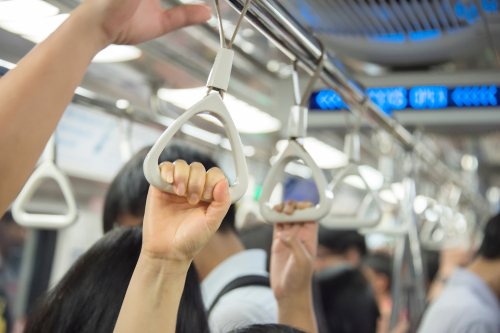We’ve all been there. You’re sitting in bumper-to-bumper traffic, peeking into the windows of other people’s cars, wondering why you’re all driving when you could be on a metro, light rail, or tram. Then you shake the thought from your mind. There’s no way public transport could be as comfortable or reliable as your own car, right?
At Remitly, we love efficient, effective connections that make life easier. In this article, we’ll take a look at the best public transportation in the world and what makes the transit systems of Singapore, Tokyo, Zurich, Copenhagen, and Hong Kong so successful. We’ll give you some practical insights as well, in case you decide to travel to these cities to experience them for yourself.
What makes public transportation truly impressive?
Public transportation offers users multiple benefits, from reduced emissions and economic savings to improved quality of life. Imagine catching up on text messages, listening to your favorite podcast, or getting lost in a good book instead of being stuck behind the wheel in a traffic jam.
But what makes a public transit system really stand out? It has to be reliable, offer great geographic coverage, affordable, and provide a positive user experience.
Although there are millions of public transit systems around the world, the most successful ones integrate multiple transport modes seamlessly. In New York, for example, you can transfer between a subway and a bus, while in Lisbon you can take historic street trams or head underground for the metro.
Another hallmark of a good public transportation system is the ability to cater to all types of riders. This includes accessibility for those with differences in abilities or with baby strollers, so elevators and ramps are a staple. Let’s look at what makes the top five transport systems around the world great.
Singapore: the gold standard of efficiency
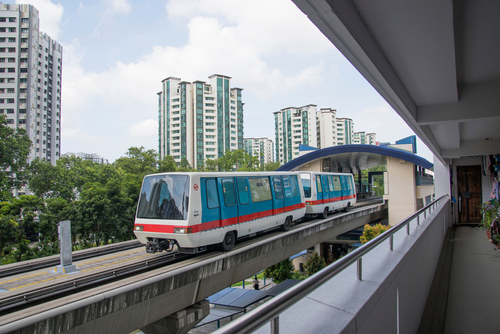
If you’re looking to grab public transport in Singapore, you’ll have the choice of Mass Rapid Transit (MRT), buses, and Light Rail Transit (LRT). The system is managed by the Land Transportation Authority and is known for being extremely punctual and user-friendly.
Trains typically run every two to four minutes during peak hours and every five to seven minutes during off-peak hours. The system is known for its cleanliness, safety, and smooth operation. Plus, it integrates innovative features like platform screen doors and air-conditioned stations.
Integration and payment options
The system of MRT, buses, and LRT connect at specific points called Integrated Transport Hubs or ITHs. Here, you can transfer between modes of transport. Plus, these bigger stations are often integrated with commercial developments, like shopping malls.
You can choose to pay using contactless methods, like a debit or credit card or through a mobile wallet. Alternatively, you can get a traditional stored-value card that can be topped up as you use it. If you’re traveling to Singapore and have a tourist itinerary, consider buying an unlimited travel card for the days you’re exploring the city.
Tokyo: managing complexity at scale
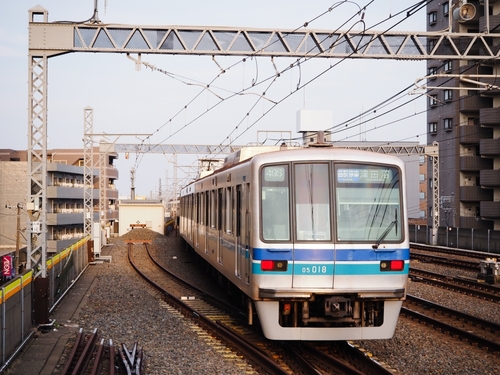
Tokyo’s public transit network serves 40 million daily passengers across multiple operators. It’s one of the most extensive, efficient, and punctual public transportation networks in the world and is mainly made up of a system of subways and trains.
The public transport system is managed by different groups, including the private Tokyo Metro company and JR East, and the government-run Toei Subway.
Subway pushers
There’s a specific etiquette around riding the subway in Tokyo, especially during rush hours when the cars are incredibly crowded. Maintain a lower, respectful voice when on public transportation. Take your backpack off and place it near your feet to create more standing space. Always let people exit the car before boarding.
At popular stops during rush hour, you may encounter “subway pushers.” These are employees from the management companies who monitor the platform and help fill trains to their maximum capacity—yes, by “pushing” people into the cars.
Unique features
The subway cars throughout the Tokyo transit network are climate-controlled. If the AC cooling in the summer is too strong for you, look out for “mildly air-conditioned cars” or jakureibusha, which have a higher temperature setting.
During peak hours, female riders can also board female-only cars. These were developed to ensure that women are both comfortable and safe, especially during cramped rush hour times.
The role of technology
Travelers in Tokyo can navigate the transit system using smartphone apps like Google Maps. You can board public transportation using a refillable “IC” card. This is a prepaid card for the subway, which can also be used at vending machines, convenience stores, and participating businesses.
Zurich: small city, big impact
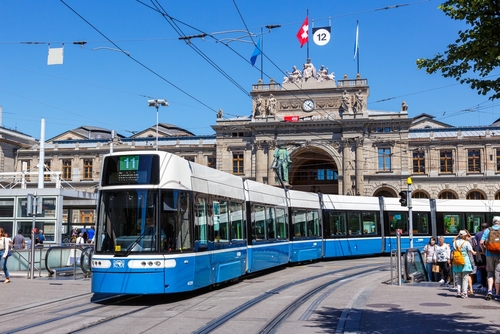
What do wristwatches and the Olympics have in common? The Swiss. Switzerland’s punctuality culture has made its watch manufacturers, like Omega, top of the line—and responsible for timing at the Olympic Games. This cultural obsession with time extends to their extremely reliable public transport system.
Integrated ticketing system
The ZVV is made up of trams, buses, commuter trains (S-bahns), and boats on Lake Zurich and the Limmat River. Ticketing across these options is integrated and covers all local transport. Once you’ve planned your trip, you can purchase tickets on the ZVV mobile app, website, or at the blue ticketing machines located at most public transport stops.
Frequent and comprehensive service
The ZVV is very efficient and trams and buses typically run every seven to ten minutes and, as is expected in Swiss culture, maintain high punctuality rates.
Accessibility
Because much of the ZVV is above ground, via buses or trams, the network is very accessible. Most buses and trams have ramps or low-floor sections to accommodate riders. Check the ZVV website or app for specific accessibility information.
Copenhagen: cycling and transit integration
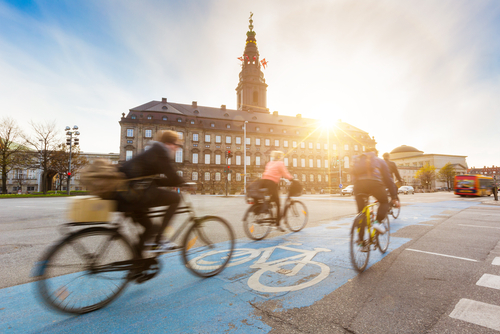
The Danish capital is a city where everyone asked, “What if we deprioritize cars?” To answer this question, the city developed a robust public transportation network in addition to creating infrastructure that places cyclists above passenger cars.
The public transit system includes metros, buses, S-trains, and a water bus. All of these options are accessible through a single ticket. If you’d like to take advantage of the cyclist-friendly infrastructure, you can also rent a bike through the city bike rental program.
24/7 service
If you’re traveling to Copenhagen, your itinerary does not need to yield to metro closures. The metros in Copenhagen are automated, allowing them to run non-stop 24/7. This has been the plan since the metro’s inception in the early 2000s.
Zone-based pricing
The public transit system in Copenhagen is divided into zones, each priced differently. The cost of your trip will increase the more zones you cross. This zone-based pricing system encourages use of the public transit system by making it affordable, even for short trips.
Environmental benefits
By depriorizing cars, Copenhagen is able to achieve large carbon reductions. It’s estimated that the popularity of cycling saves the city 90,000 tons of CO2 annually. On top of that, the transit system continues to push for further environmental benefits. For example, Copenhagen is looking to replace all diesel buses with electric buses by the end of 2025.
Hong Kong: profitability meets performance
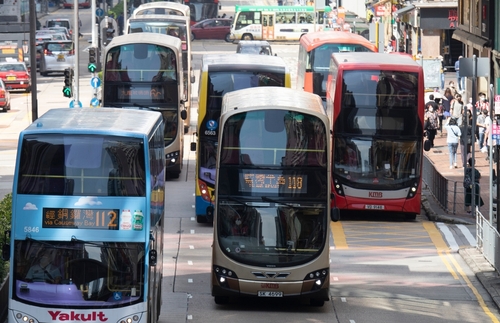 The Mass Transit Railway (MTR) is the backbone of Hong Kong’s celebrated public transport network. You can also catch buses, minibuses, trams, and ferries in Hong Kong. Throughout the public transport system, immigrants and tourists benefit from bilingual signage, making navigation easier.
The Mass Transit Railway (MTR) is the backbone of Hong Kong’s celebrated public transport network. You can also catch buses, minibuses, trams, and ferries in Hong Kong. Throughout the public transport system, immigrants and tourists benefit from bilingual signage, making navigation easier.
The Octopus card
The Octopus card is a rechargeable, contactless smart card that integrates Hong Kong’s transit network. It’s the most convenient way to pay for the MTR, buses, trams, and ferries. You can get your own Octopus card at MTR customer service points, convenience stores like 7-Eleven, kiosks at sea and land borders, or online. If you’re arriving at the Hong Kong airport, purchase your Octopus card at the 7-Eleven in arrivals, the Hong Fook Tong at departures, or the MTR service point or machines.
Integration with shopping centers and residential developments
The Hong Kong MTR is funded through a Rail and Property (R+P) model. This means that commercial and residential areas are purposefully developed above or around MTR stations. Ensuring that homes, businesses, and retail spaces are directly connected to the MTR increases ridership.
Maintenance standards
The maintenance of public transport in Hong Kong is held to rigorous standards and systems. There are regular risk assessments and inspections to ensure compliance with government regulations. These include limits for vehicle emissions and air quality in bus facilities. This results in a public transport system that focuses on safety, reliability, and top-notch service.
Key lessons for other cities
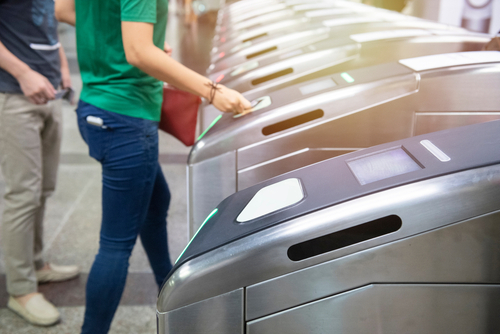
Great public transportation systems don’t crop up overnight. Instead, they are the product of long-term planning and consistent investment. They’re responsive to the needs and habits of the people riding them as well as community initiatives, like pushes to be more environmentally friendly.
In order for these cities to have great public transit options, both politicians and public support had to drive success. This is true in other cities with great infrastructure for public transit as well, like Shanghai, Vienna, and Boston.
Looking forward: the future of public transit
Even in cities where public transportation is already popular, investing in the transit system can result in some futuristic developments. Here are a few to keep an eye out for:
- Autonomous vehicles are becoming increasingly popular as their technology develops and becomes safer and more user-friendly. Although automated train systems have been in use for decades, autonomous buses could soon be on the streets. For example, the FABULOS project in Helsinki is looking to add on-demand, driverless minibuses to its public transport options.
- Smart ticketing is becoming increasingly popular in public transport systems globally. This technology allows riders to pay for a ticket using contactless technology through physical cards, cell phones, mobile apps, and more. Ultimately, smart ticketing could replace traditional paper tickets and transport cards.
- Electric buses are making cities cleaner, quieter, and more sustainable. They eliminate tailpipe emissions and drastically reduce noise pollution. Although they typically have higher initial costs, many cities are integrating them into their fleet of buses due to their environmental benefits.
Conclusion: transportation that connects communities
When a city has a well-designed public transport system, it can be transformative. These systems improve daily life for millions of riders each day. If you’re a fan of public transport, advocate for options in your own city by voting for politicians with similar priorities or making proposals at public meetings. And if your city already has some form of public transit, make sure to support it by incorporating it into your daily routines as much as possible.
FAQs
What makes a public transportation system successful?
A great public transportation system is defined by accessibility, convenience, reliability, speed, safety, affordability, and comfort. If a transport system is easy to use, brings people to all the destinations they want to reach, and runs effectively, users will opt for it over other modes of transport, like driving.
How do these cities fund their transportation systems?
These cities fund their public transportation systems with a mixture of direct government investment, annual operating subsidies, fare revenues, taxation on private vehicles, or partnerships with developers.
What role does technology play in modern transit systems?
For passengers, technology can give you real-time information about transport systems. You can track buses or find out when the next metro train is arriving. It may also allow you to pay using contactless technology through your phone or credit or debit card. Finally, there may be some on-board amenities, like WiFi, available to you to enhance the user experience of public transportation.
How do I know if a public transport system has accessibility for disabled passengers or passengers with different mobility needs?
Start by looking for accessibility information on the transport provider’s website. Look for planning tools on apps you already use, like Google Maps, to see what accessibility options are available at each station. When traveling, look for accessibility signage and information at stops and platforms. In some cases, there will be announcements about whether or not a station is accessible via elevator. Finally, contact the transportation operator directly if you need personalized assistance.
